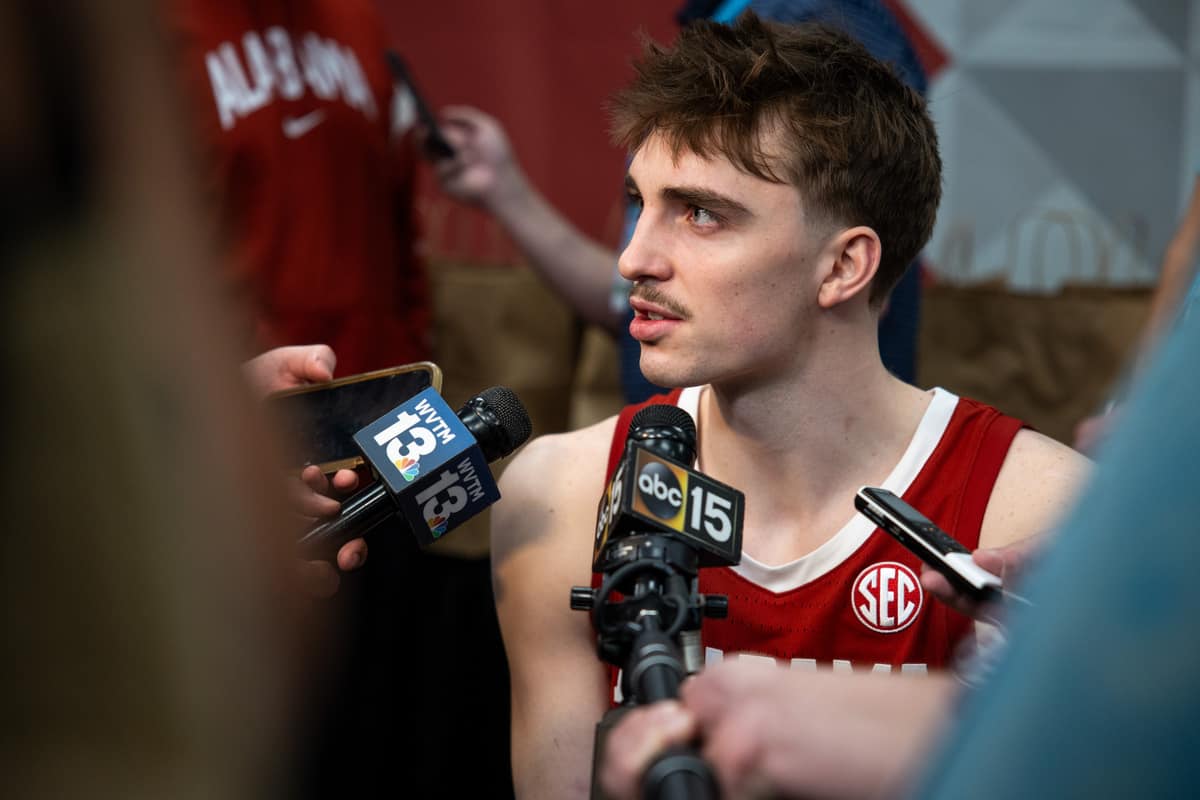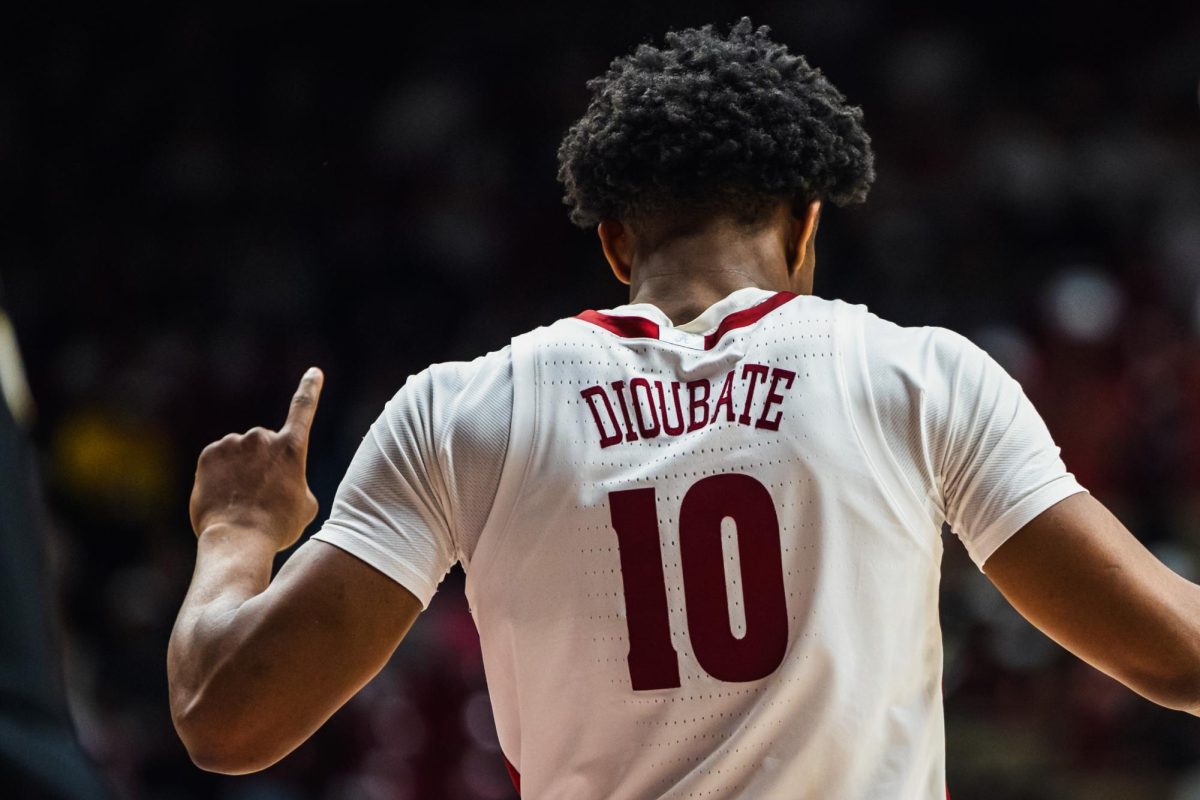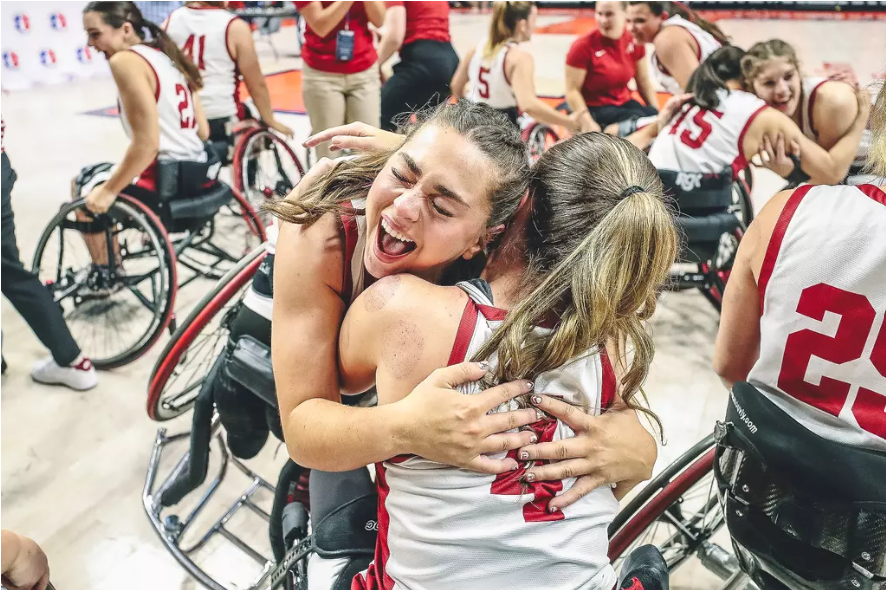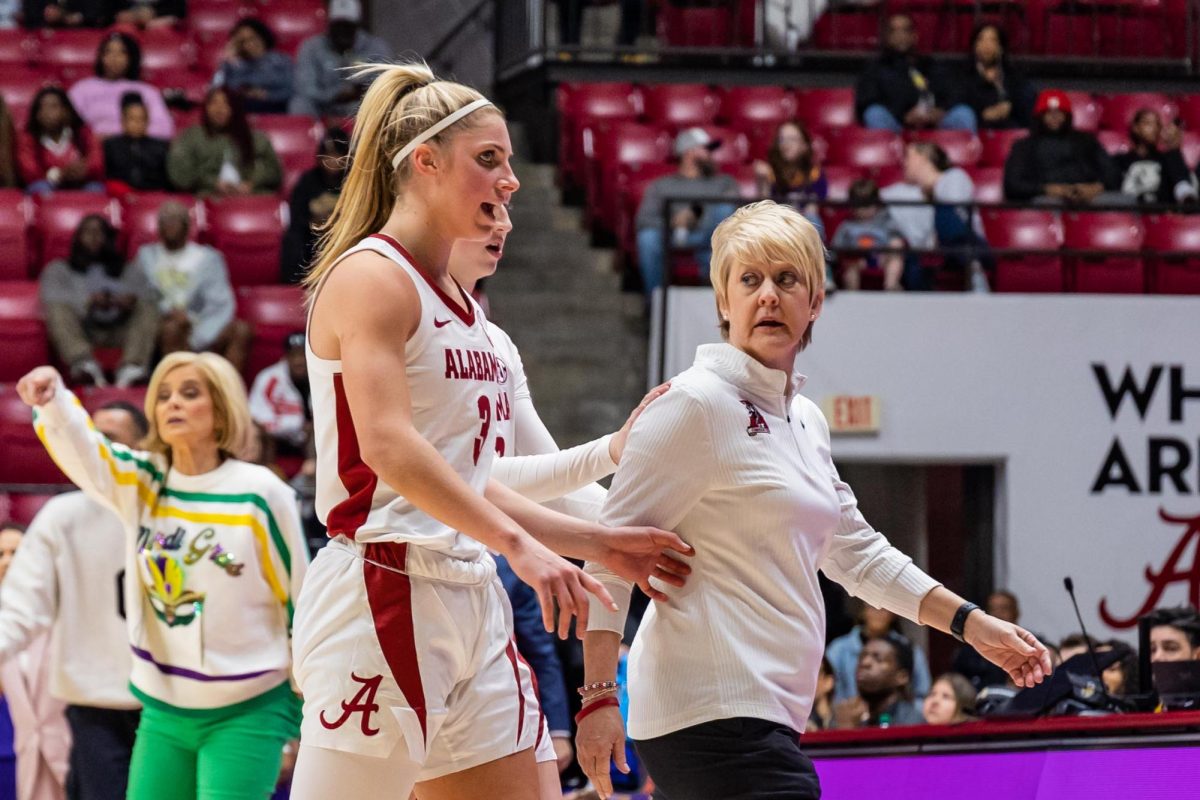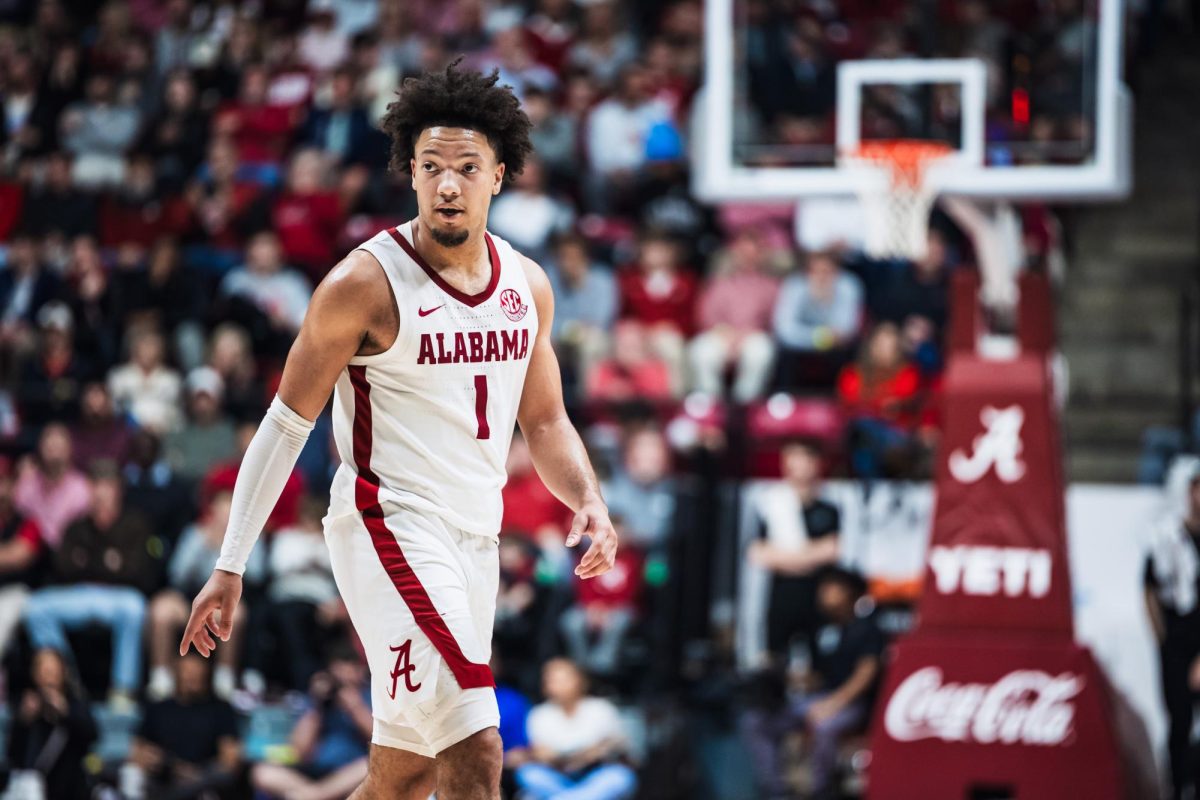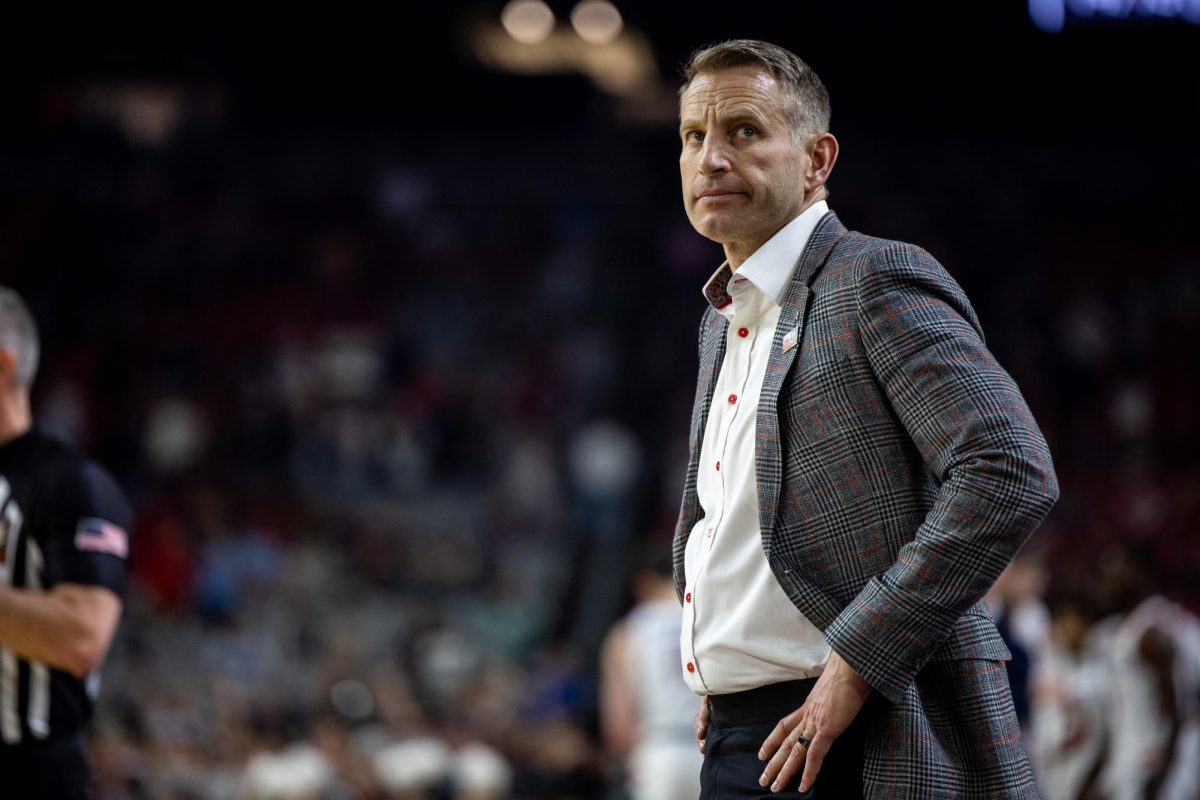If the heightened prevalence of the transfer portal weren’t already evident, the 2024 Elite Eight made it crystal clear. This year’s fourth round of games featured only one team whose entire starting five began their career in the program — the Duke Blue Devils — with everyone else fielding various degrees of mishmash.
The North Carolina State Wolfpack was the only squad not to have a single starter with Raleigh as his college-hoops natal town. Interestingly, Alabama barely missed out on this distinction: Rylan Griffen, with 32 starts under his belt, is a sophomore who played on last year’s No. 1 overall seed.
The Crimson Tide has forged success wielding a roster filled with basketball migrants. Aside from Griffen and freshmen Sam Walters and Jarin Stevenson, every double-digit-minute rotation player is a seasoned veteran whose stop in Tuscaloosa is the latest in a multi-school career. Some were stars in other prominent programs, and some transferred to Alabama seeking vitalization.
In order to fully appreciate where the team stands now, it is important to know the paths of its constituents. Below is a chronicle of the best Crimson Tide players’ college basketball journeys.
Mark Sears, guard, senior
College path: Ohio (2021-22), Alabama (2023-24)
Over the course of a single offseason, Sears went from solid contributor to the unquestioned leader of the Crimson Tide attack. He upped his output from 12.5 points, 2.6 assists and just over a steal a game with underwhelming 40.6%/34.5% splits from the field and from 3, respectively, to 21 points, four assists, nearly two steals and 50.6%/43.4% in those areas.
Prior to his two years in Tuscaloosa, Sears was a member of the Ohio Bobcats. His tenure in the Mid-American Conference was characterized by solid success, and his freshman year even saw an upset of the fourth-seeded Virginia Cavaliers in the NCAA Tournament. Sears was little more than a rotation piece on that tournament team, but the following year was his breakout; he nearly eclipsed 20 points per game while leading the team in usage rate, box plus-minus, and player efficiency rating.
This year has proven that his ability as a leader can go beyond the mid-major level. He is the head of the snake, so to speak, and has guided Alabama’s ballistic offensive assault to elite levels. Fans and analysts are united in appraising Sears as not only one of the best guards in the SEC, but one of most lethal in the nation.
Aaron Estrada, guard, senior
College path: St. Peter’s (2020), Oregon (2021), Hofstra (2022-23), Alabama (2024)
Estrada is without question the best-traveled member of the Crimson Tide, having gone from St. Peter’s in New Jersey to Oregon, then back across the country to Hofstra in New York, and finally settling down in the heart of the South.
His success largely mirrors the capriciousness of his travels. At St. Peter’s, he put up middling numbers with poor efficiency while playing less than 20 minutes a game. Under Dana Altman at Oregon, he played sparingly and put up career lows in essentially every meaningful category. It was at Hofstra that he made a leap, leading the team in scoring and rebounding both years as a guard.
That excellence led him to where he is now, second to Sears in points and assists and barely trailing Grant Nelson in rebounds. He is a do-it-all player for a team whose play style demands it; it is a fitting final stop in a wide-spanning career.
Grant Nelson, forward, senior
College path: North Dakota State (2021-23), Alabama (2024)
Another one of Alabama’s seasoned veterans, Nelson was perhaps the most widely anticipated of the Crimson Tide’s offseason pickups. He spent his first three years in the frigid north, starting small and progressing all the way to a junior season in which he nearly averaged an 18-point double-double.
His solid numbers and physical tools — he’s 6 feet, 10 inches with a rangy wingspan — made him an enticing prospect in the portal. It unfortunately hasn’t always been pretty, with significant drop-offs in rebounding, player efficiency rating and effective field goal percentage between his third and fourth years. When it mattered most, however, in a prize-fight matchup with the top-seeded North Carolina Tar Heels, he stepped up, notching a 24-point, 12-rebound double-double with five blocks and hitting multiple key shots down the stretch.
There’s a convincing argument that without such a performance, this immaculate Final Four run would have ended a week early. Forget the regular-season struggles; who’s going to remember anything else?
Latrell Wrightsell Jr., guard, senior
College path: Cal State Fullerton (2021-23), Alabama (2024)
Like Nelson, Wrightsell spent three years with another school before coming to Alabama. Like Estrada, a cross-country move was part of the process. Like both of those players, Wrightsell has become a valuable piece of the puzzle.
His counting stats aren’t awe-inspiring; where he stands out, however, is in his 3-point shooting, a dexterity that puts him right at home in a Nate Oats offense. Oats, the Crimson Tide’s head coach, has sung Wrightsell’s praises all season, even at one point declaring him “one of the best shooters I’ve ever coached.”
Here’s a fun statistical nugget: Alabama is 11-1 when Wrightsell drains three or more from deep, the one loss coming against potential national championship opponent Purdue. The story is simple: When he gets hot, the Crimson Tide is nigh unstoppable.
Nick Pringle, forward, senior
College path: Wofford (2021), Dodge City (Kansas) Community College (2022), Alabama (2023-24)
The ups and downs have pervaded the entirety of Pringle’s career. He began at the Division I level putting up meager stats in minimal playing time at Wofford; the following year saw him drop out of the NCAA entirely.
His time in Tuscaloosa has likewise been tumultuous at times, with multiple suspensions and a traveling issue that put his status in this year’s NCAA Tournament at risk. Hidden behind solid but not insane averages of 7 points and five rebounds on 63% shooting from the field, however, have been moments of indispensable spark.
Frequent have been possessions where he’ll get a valuable stop on defense or grab two or three offensive rebounds in a single trip, igniting the Alabama fire when it has nearly run out.
For all the off-the-floor headaches he might have caused within the program, he has caused an equal number of headaches for opposing teams. He plays his role well, and at the tail end of an at-times difficult career, he deserves to be commended.
Mohamed Wague, forward, junior
College path: Harcum (Pennsylvania) College (2022), West Virginia (2023), Alabama (2024)
Wague’s time in the spotlight has admittedly been limited in his two seasons of DI basketball. He put up 4 points and just over three rebounds a game last season at West Virginia, and his numbers have taken a slight dip in his first year with the Crimson Tide.
Being a junior, he fortunately has time to grow and carve out a role. Should he remain with Alabama, he has the chance to take his physical strengths and athleticism and forge them into something of true value.
The journey is never over, and in an “everybody eats” system like Oats’, the potential for advancement is high and there for the taking.



